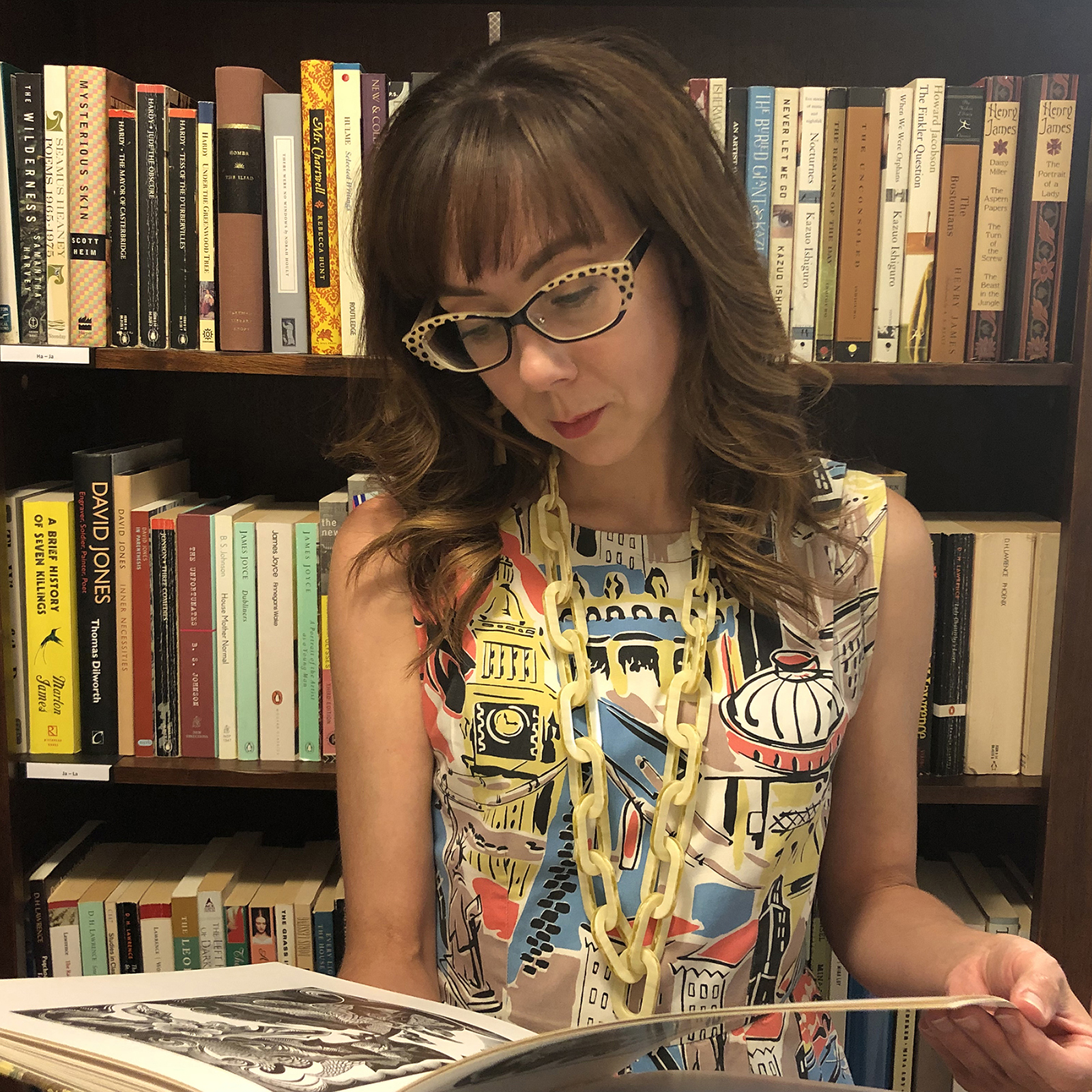Christina Walter

Research Expertise
Film Studies and Cultural Studies
LGBTQ Studies
Literary Theory
Literature and Science
Modernist
Poetics
Post-1900 British and Irish
Postmodern and Contemporary
Transatlantic Studies
Victorian
Women's Literature and Feminist Theory
I specialize in modern and contemporary British and global anglophone literature and visual culture; in the intersections of science, technology, and aesthetics; and in gender and critical race studies.
My book Optical Impersonality: Science, Images, and Literary Modernism (Johns Hopkins 2014) remaps one of the most dominant modernist aesthetics, that of “impersonality.” It uncovers how stylists of impersonality--from Mina Loy to T. S. Eliot to Eve Kosofsky Sedgwick--adapted ideas and experiments from the contemporary science and philosophy of human vision, participating in a popular rethinking of the psychology and physiology of sight and also rewriting a long-standing artistic conversation about what images are and do. Their goal was to situate human subjecthood firmly within the body and to use that subjectivity to call for political changes in the ways we live and relate to each other.
I am currently working on a monograph entitled "Modernism from the Gut: Aesthetics, Ontology, and the Science of the Second Brain." The gut has received a major promotion in contemporary discourses of the body. No longer just the energy factory that fuels the more interesting parts of our existence, it has taken on an outsized ontological aura equivalent to that of “the mind”—with some going so far as to label the gut “the second brain.” While digestive and nutritional sciences are widely cited to justify this promotion, we don’t yet have a history of how these sciences were turned into an ontological story that’s also an object of popular fascination. “Modernism from the Gut” unearths some of the early and most intriguing chapters in this story, returning to the moment when the sciences of the gut became specialized in the early twentieth century and exploring their interchange with a modernist culture that avidly took them up. It explores as well the legacy of these stories in contemporary popular science and media accounts of the gut microbiome and even GUT theory.
I’m also working on a short monograph entitled “Lee Miller’s Food Modernism,” which investigates the lived art of the renowned photographer and journalist Lee Miller from the 1950s through 70s. Miller put down her camera after WWII and is typically understood to have retired into domestic life. Making extensive use of unpublished archival materials, though, I trace how Miller, far from retiring, instead turned to a lived modernism organized around surrealist food production, display and consumption—from cooking contests and magazine essays to farming experiments and curated house parties. In other words, Miller was engaged with modernist art long after her own public youth and the youth of modernism itself.
Publications
Optical Impersonality: Science, Images, and Literary Modernism
Western accounts of human vision before the nineteenth century tended to separate the bodily eye from the rational mind.
Author/Lead: Christina WalterRead More about Optical Impersonality: Science, Images, and Literary Modernism
Optical Impersonality: Science, Images, and Literary Modernism
Christina Walter explores how a new physiology of vision provoked writers to reconceive the relations among image, text, sight, and subjectivity.
Author/Lead: Christina WalterWestern accounts of human vision before the nineteenth century tended to separate the bodily eye from the rational mind. This model gave way in the mid–nineteenth century to one in which the thinking subject, perceiving body, perceptual object, and material world could not be so easily separated. Christina Walter explores how this new physiology of vision provoked writers to reconceive the relations among image, text, sight, and subjectivity. Read more at JHUP.
“Getting Impersonal: Mina Loy’s Body Politics from ‘Feminist Manifesto’ to Insel”
In 1917, a New York Evening Sun reporter interviewed English writer and painter Mina Loy for a piece on the "modern woman."
Author/Lead: Christina WalterRead More about “Getting Impersonal: Mina Loy’s Body Politics from ‘Feminist Manifesto’ to Insel”
“H.D.’s ‘Cinema and the Classics'”
“Cinema and the Classics” is a series of three essays written by H.D. and published in the first English-language film journal Close Up in 1927.
Author/Lead: Christina Walter“Mina Loy’s ‘Feminist Manifesto’ and Auto-Facial-Construction"
“Feminist Manifesto” is a polemic against women’s subordinate position in modern Western culture, penned in 1914 by Anglo-American writer and painter Mina Loy.
Author/Lead: Christina WalterRead More about “Mina Loy’s ‘Feminist Manifesto’ and Auto-Facial-Construction"
“From Image to Screen: H.D. and the Visual Origins of Modernist Impersonality”
This essay traces the visual origins of modernism's impersonal aesthetic through the example of two critical-theoretical works by H.D.
Author/Lead: Christina WalterRead More about “From Image to Screen: H.D. and the Visual Origins of Modernist Impersonality”
“Booksellers and Bestsellers: British Book Sales as Documented by The Bookman, 1891 – 1906”
Research on book sales, as Wallace Kirsop has pointed out in this journal, has only recently gained the prominence the subject deserves.
Author/Lead: Christina WalterService & Outreach
Phillips Collection-UMD Partnership Taskforce, Special Seminars and Exhibitions Committee
In fall 2015, The Phillips Collection and the University of Maryland launched a bold partnership with a shared vision to dramatically transform scholarship and innovation in the arts.
Author/Lead: Christina WalterFunding Agency: Phillips Collection

